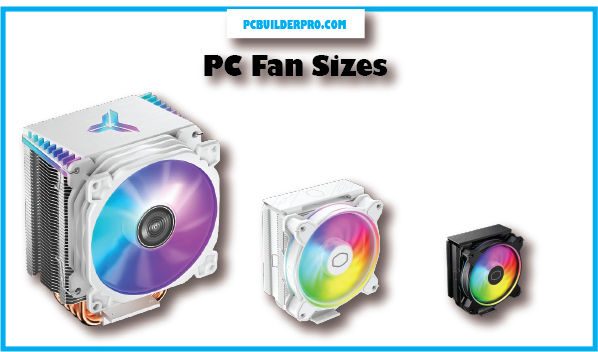Does your computer get really warm when you’re using it a lot? No need to worry, it’s not because of how you play games (well, maybe not)! Inside your computer, there are fans that
work like little coolers. They fight off the heat so everything inside works well. But do you wonder how these fans do their job, and if some are better than others? Let’s jump into the
world of PC fan sizes! We’re going to look at all the different sizes you can get, how to pick the best one for your computer, and some extra advice to make sure your fans keep
working without making a lot of noise. Get set to learn about keeping your computer cool and ready for any game or task you throw at it!
PC Fans and Their Sizes: Explained
Hey there, tech lovers pals! Today, we’re going to talk about something super cool that keeps our computers from getting too hot – PC fans! But don’t worry, we’re going to keep it as simple as playing with your building blocks.
What’s a PC Fan?
Imagine your computer is like a busy kitchen, cooking up all your favorite games and homework assignments.
Just like a kitchen can get hot when the stove is on, a computer can get hot when it’s working hard. That’s where PC fans come to the rescue!
Why Do We Need Them?
Picture this: you’re running a race on a hot day, and you’re wearing a big, fluffy sweater. You’d get super sweaty, right?
Well, computers can sweat too, but instead of sweat, they produce something called “heat.” Too
much heat can make your computer unhappy and slow. PC fans are like the computer’s cool, comfy T-shirt that helps it stay chill.
Different Sizes of Fans

Now, let’s talk about PC fans’ sizes. They come in three main sizes: Small, Medium, and Big. Imagine these fans as different-sized ice cream cones!
Small Fans (80mm): These are like the mini ice cream cones. They’re great for tiny computers or when you don’t have much space inside.
Medium Fans (120mm): Think of these as regular-sized ice cream cones. They’re the most common size and fit most computers just right.
Big Fans (200mm): These are the giant ice cream cones! They’re like a gentle breeze on a hot day, perfect for really big computers that need extra cooling.
Why Does Size Matter?
Remember, we want to keep our computer cool, not freezing cold. If you put a big fan in a small computer, it’s like trying to fit a giraffe into a mini car
it won’t work well. And if you put a small fan in a big computer, it’s like using a tiny umbrella in a rainstorm – not very effective.
So, we pick the fan size that matches our computer’s needs, just like we choose the right size of shoes for our feet!
PC Fan Sizes Table
| Fan Size | What It’s All About | Where It Shines |
|---|---|---|
| 40mm | Tiny but Mighty | Fits easily in small cases |
| 60mm | Short and Sweet | Perfect for quiet movie nights |
| 80mm | Compact Coolness | Ideal for small setups and secret agent PCs |
| 92mm | Mid-Tower Maestro | Keeps things cool in moderate-sized towers |
| 120mm | The Crowd Favorite | A superstar in mid and full-tower cases |
| 140mm | Liquid Cool Whiz | Masters both airflow and silence |
| 200mm | Peaceful Power | Quiets your PC while working like a champ |
| 220mm | Mega Breeze | Ideal for the gaming colossus |
| 240mm | Tower Hog | Requires space but cools like a pro |
1. 40mm PC Fan Dimensions
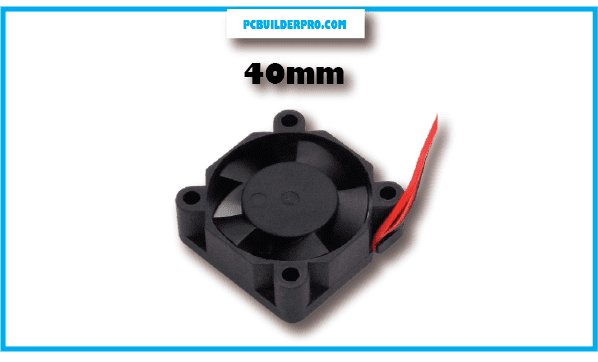
In the realm of PC cooling, size doesn’t always matter, and that’s where 40mm PC fans step in. These tiny dynamos, measuring just 40mm in diameter, pack a surprising punch when it comes to keeping your devices
cool. In this guide, we’ll explore the dimensions, benefits, applications, and how to choose the right 40mm PC fan to keep your tech running smoothly.
So, buckle up (or should we say, “fan” it out?) as we delve into the world of mini-cooling marvels.
Dimensions of 40mm PC Fans: The Small Giants
Let’s get the basics down. A 40mm PC fan boasts the following dimensions:
- Diameter: 40mm (1.57 inches)
- Thickness: 10mm (0.39 inches)
- Mounting Holes: 40mm x 40mm (1.57 inches x 1.57 inches)
Yep, they’re small, but they bring a lot to the cooling game.
Why Go Small? The Benefits of 40mm PC Fans
Why opt for a 40mm PC fan? Well, there are some excellent reasons:
- Compact Size: These fans are perfect for tiny devices where space is at a premium.
- Feather-Light: They’re incredibly lightweight, making them easy to handle and install.
- Peace and Quiet: Despite their size, 40mm fans are known for quiet operation, ideal for noise-sensitive environments.
- Budget-Friendly: They won’t break the bank, making them an economical cooling solution.
Where to Deploy 40mm PC Fans: Versatility Unleashed
These little champs can be deployed in various scenarios:
CPU Cooling: Keep your low-power PC’s brain (CPU) cool and collected.
GPU Cooling: Even the graphics card (GPU) can benefit from their cooling prowess.
Case Cooling: In small form factor PCs, 40mm fans can help expel hot air or boost airflow to critical components like motherboards and hard drives.
Other Applications: Don’t stop at PCs; these fans are handy for cooling AV receivers, power supplies, 3D printers, routers, and more.
Choosing the Right 40mm PC Fan: The Fine Details
When selecting your 40mm PC fan, here’s what to consider:
Airflow (CFM): More is often better, so aim for higher CFM for improved cooling.
Noise Level (dBA): Quieter fans are great for peace of mind; check the dBA rating.
Speed (RPM): Higher RPM equals more airflow but may also mean more noise.
Price: Prices can vary widely, so find one that suits your needs and budget.
Popular 40mm PC Fan Brands: Trust the Pros
In the world of 40mm PC fans, some brands stand out:
- Noctua
- Arctic
- Scythe
- Cooler Master
- Corsair
These brands have earned their stripes in the cooling game.
Conclusion: Mini Fans, Mighty Cooling
So, there you have it—the world of 40mm PC fans, where size doesn’t compromise performance. These petite powerhouses offer efficient and budget-friendly cooling solutions for a range of devices. When picking your
40mm PC fan, don’t forget to factor in airflow, noise, speed, and your wallet. As they say, “Good things come in small packages,” and 40mm PC fans prove it in the world of cooling tech. Stay cool, stay small!
2. 60mm PC Fan and Dimensions

In the world of PC cooling, the 60mm PC fan is your compact companion, bridging the gap between size, performance, and peace. Slightly larger than their 40mm counterparts, these
fans strike a sweet balance. If you’re curious about how they measure up and where they shine, you’re in for a cool ride.
Let’s dive into the dimensions, benefits, applications, and tips for choosing the perfect 60mm PC fan.
Dimensions of 60mm PC Fans: Small Package, Big Cooling
To get started, here are the dimensions of a 60mm PC fan:
- Diameter: 60mm (2.36 inches)
- Thickness: 10mm (0.39 inches)
- Mounting Holes: 50mm x 50mm (1.97 inches x 1.97 inches)
They might be small, but they sure know how to keep things cool.
Why Choose 60mm PC Fans? Benefits Galore
60mm PC fans come with their fair share of perks:
- Compact Power: These fans are perfect for smaller devices where space matters.
- Featherweight Champions: Lightweight and easy to handle, making installation a breeze.
- Library-Quiet: Known for their hushed operation, they’re a great fit for quiet environments.
- Budget-Friendly: Wallet-friendly without compromising on performance.
Where 60mm PC Fans Shine
Don’t let their size fool you; 60mm PC fans can step up to the cooling challenge in various scenarios:
CPU Cooling: Keep your low-power PC’s brain (CPU) running smoothly with these fans.
GPU Cooling: Even your graphics card (GPU) can benefit from their cooling prowess.
Case Cooling: In small form factor PCs, these fans help whisk away hot air or provide extra airflow to critical components like motherboards and hard drives.
Multi-Purpose Cooling: Think AV receivers, power supplies, 3D printers, routers, and more—they can tackle it all.
Choosing the Right 60mm PC Fan: Navigating the Options
When shopping for a 60mm PC fan, keep these factors in mind:
- Airflow (CFM): Look for higher CFM for more effective cooling.
- Noise Level (dBA): Lower dBA ratings mean quieter operation—ideal for peaceful environments.
- Speed (RPM): Higher RPM equals more airflow, but it can also mean more noise.
- Price: 60mm fans come in various price ranges, so choose one that suits your needs and budget.
Popular 60mm PC Fan Brands: Trust the Experts
Some well-known 60mm PC fan brands include:
- Noctua
- Arctic
- Scythe
- Cooler Master
- Corsair
These brands have earned their stripes in the cooling realm.
Conclusion: The Small Fans with Big Cooling Ambitions
60mm PC fans may be small, but they pack a punch when it comes to cooling. Versatile, budget-friendly, and hushed in operation, they’re the ideal solution for devices in tranquil environments. When selecting your
60mm PC fan, remember to consider airflow, noise, speed, and your budget. These little cooling wonders prove that sometimes, the best things do come in small packages. Stay cool, stay efficient with 60mm PC fans!
3. 80mm PC Fan and Dimensions

In the realm of PC cooling, the 80mm PC fan emerges as a versatile champ, ready to tackle various cooling needs. These compact yet efficient fans have found their home in a wide
range of applications, from cooling computers to keeping servers and electronic devices in check. Let’s delve into the dimensions, benefits, applications, and considerations for
choosing the perfect 80mm PC fan.
Dimensions of 80mm PC Fans: Compact Powerhouses
First things first, let’s look at the dimensions of a typical 80mm PC fan:
- Diameter: 80mm (3.15 inches)
- Thickness: 25mm (1 inch)
- Mounting Holes: 71.5mm x 71.5mm (2.81 inches x 2.81 inches)
These fans might be small, but they pack quite a cooling punch.
Why Opt for 80mm PC Fans? Benefits That Speak Volumes
Here’s why you should consider 80mm PC fans for your cooling needs:
- Compact Size: Perfect for snug spaces where every millimeter counts.
- Light as a Feather: Their lightweight build makes them a breeze to transport and install.
- Whisper-Quiet Operation: Known for their hushed performance, they’re ideal for noise-sensitive environments.
- Budget-Friendly: Wallet-friendly without compromising on performance.
Where 80mm PC Fans are Good
80mm PC fans shine in various cooling scenarios:
CPU Cooling: Keep your low-power or small form factor PC’s brain (CPU) cool and efficient.
GPU Cooling: Even graphics cards (GPU) in compact setups can benefit from their cooling prowess.
Case Cooling: Whether to expel hot air from your PC case or provide extra airflow to critical components, like motherboards and hard drives, they’ve got you covered.
Multi-Purpose Cooling: From AV receivers to power supplies and electronic gadgets, 80mm fans are up for the task.
Choosing the Right 80mm PC Fan: Navigating Your Options
When selecting an 80mm PC fan, remember these key factors:
- Airflow (CFM): Higher CFM means more efficient cooling.
- Noise Level (dBA): Lower dBA ratings translate to quieter operation—ideal for serene environments.
- Speed (RPM): A wide RPM range offers versatility, but keep in mind that a higher RPM often means more noise.
- Price: 80mm fans come in various price ranges, so you’ll find options that suit your budget.
Popular 80mm PC Fan Brands: Trustworthy Names
Consider these reputable brands when shopping for 80mm PC fans:
- Noctua
- Arctic
- Scythe
- Cooler Master
- Corsair
These brands have earned their stripes in the cooling industry.
Conclusion: The Quiet Heroes of Compact Cooling
80mm PC fans may be compact, but they’re fierce when it comes to cooling. Versatile, budget-friendly, and masters of silence, they’re the ideal solution for devices in tranquil environments. When choosing your 80mm
PC fan, factor in airflow, noise, speed, and your budget. These little cooling heroes prove that size doesn’t matter when it comes to chilling out. Stay cool, stay efficient with 80mm PC fans!
4. 92mm PC Fan and Dimensions

In the world of PC cooling, the 92mm PC fan stands tall as a versatile workhorse, ready to tackle a wide range of cooling tasks. Despite its relatively small size, this fan is a
heavyweight champion in the cooling arena. Let’s dive into the dimensions, advantages, applications, and tips for choosing the perfect 92mm PC fan.
Dimensions of 92mm PC Fans: Small but Mighty
First, let’s take a look at the dimensions of a typical 92mm PC fan:
- Diameter: 92mm (3.62 inches)
- Thickness: 25mm (1 inch)
- Mounting Holes: 82.5mm x 82.5mm (3.25 inches x 3.25 inches)
This fan may be compact, but it’s packed with cooling potential.
Why Opt for 92mm PC Fans? Big Benefits in a Small Package
Here’s why 92mm PC fans should be on your radar:
- Space-Saver: Perfect for those tight spots where every millimeter counts.
- Featherlight: Lightweight and easy to install, these fans won’t weigh you down.
- Library-Quiet Operation: Known for their hushed performance, they’re ideal for noise-sensitive environments.
- Budget-Friendly: Effective cooling doesn’t have to break the bank.
Where To Place 92mm PC Fans
These fans are a versatile cooling solution for a range of applications:
CPU Cooling: Keep your low-power or small form factor PC’s CPU running cool and efficient.
GPU Cooling: Even compact graphics cards (GPU) can benefit from their cooling prowess.
Case Cooling: Use them to remove hot air from your PC case or enhance airflow to critical components like motherboards and hard drives.
Multi-Purpose Cooling: From AV receivers to power supplies and electronic gadgets, 92mm fans can handle it all.
Choosing the Right 92mm PC Fan: A Few Key Considerations
When selecting a 92mm PC fan, keep these factors in mind:
- Airflow (CFM): Higher CFM means more efficient cooling.
- Noise Level (dBA): Lower dBA ratings translate to quieter operation—perfect for peace and quiet.
- Speed (RPM): These fans typically have a speed range of 500 to 2000 RPM. Higher RPM means more airflow but also more noise.
- Price: 92mm fans come in various price ranges, so you’ll find options to suit your budget.
Popular 92mm PC Fan Brands: Trusted Names
Consider these reputable brands when shopping for 92mm PC fans:
- Noctua
- Arctic
- Scythe
- Cooler Master
- Corsair
These brands have earned their reputation in the cooling world.
Conclusion: 92mm PC Fans – Small Package, Big Cooling
92mm PC fans might be small in size, but they offer substantial cooling benefits. Versatile, budget-friendly, and quiet as a whisper, they’re the ideal solution for devices in tranquil environments. When selecting your
92mm PC fan, factor in airflow, noise level, speed, and your budget. These little cooling champions prove that size doesn’t dictate performance. Stay cool and efficient with 92mm PC fans, where small size meets big cooling power!
5. 120mm PC Fan and Dimensions
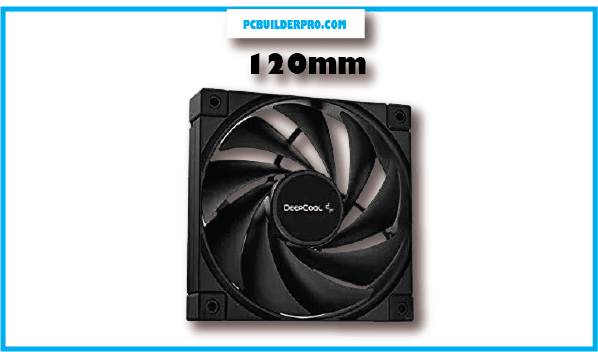
In the realm of PC cooling, 120mm PC fans reign supreme. These fans are renowned for their versatility, striking a perfect balance between size, performance, and noise. Whether you’re building a desktop, laptop, server, or
gaming console, the 120mm fan is your reliable cooling companion. Let’s explore their dimensions, advantages, applications, and tips for choosing the right 120mm PC fan.
Dimensions of 120mm PC Fans: Compact and Powerful
First, let’s get the numbers straight on a typical 120mm PC fan:
- Diameter: 120mm (4.72 inches)
- Thickness: 25mm (1 inch)
- Mounting Holes: 105mm x 105mm (4.13 inches x 4.13 inches)
Despite their compact size, these fans pack a cooling punch.
The Benefits of 120mm PC Fans: Balanced Brilliance
Why should you opt for a 120mm PC fan? Here are some compelling reasons:
- Versatility: They can be your go-to cooling solution for CPUs, GPUs, cases, and more.
- Performance Meets Quiet: 120mm fans strike an ideal balance between airflow and noise levels, suitable for various devices.
- Budget-Friendly: High-quality cooling doesn’t have to come with a hefty price tag.
Where 120mm PC Fans Shine
These fans are ready to perform in a multitude of applications:
CPU Cooling: Whether it’s a desktop, laptop, or server, 120mm fans can keep your CPU running optimally.
GPU Cooling: Gaming consoles and desktops alike benefit from their cooling prowess.
Case Cooling: Maintain an optimal temperature inside your PC case by exhausting hot air or directing airflow to vital components.
All-Purpose Cooling: From AV receivers to power supplies and electronic devices, 120mm fans can handle the job.
Selecting the Perfect 120mm PC Fan: Key Considerations
When choosing a 120mm PC fan, keep these factors in mind:
- Airflow (CFM): Higher CFM equates to more effective cooling.
- Noise Level (dBA): Lower dBA ratings ensure quieter operation.
- Speed (RPM): 120mm fans typically range from 500 to 2000 RPM, offering a trade-off between airflow and noise.
- Price: With options spanning a few dollars to over $20, there’s a fan to fit every budget.
Popular 120mm PC Fan Brands: Trusted and True
Consider these reputable brands when shopping for 120mm PC fans:
- Noctua
- Arctic
- Scythe
- Cooler Master
- Corsair
These brands have earned their stripes in the cooling industry.
Conclusion: 120mm PC Fans – Compact Cooling Powerhouses
120mm PC fans are the workhorses of the cooling world, offering a balanced blend of size, performance, and quiet operation. Versatile and budget-friendly, they excel in various devices and environments. When
selecting your 120mm PC fan, weigh factors like airflow, noise level, speed, and your budget. In the world of PC cooling, these fans prove that big things come in small packages.
Keep your devices cool and efficient with the dependable 120mm PC fan – where compact size meets powerful cooling performance!
6. 140mm PC Fan and Dimensions
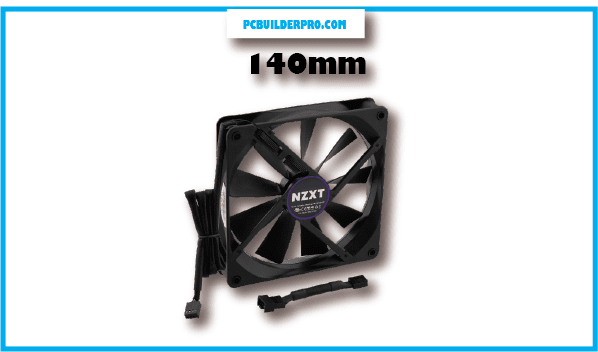
When it comes to cooling high-performance PCs and servers, size matters. Enter the mighty 140mm PC fan, a powerhouse that brings superior airflow, lower noise levels, and exceptional cooling performance to the table. Let’s dive into the dimensions, advantages, applications, and how to pick the perfect 140mm PC fan.
Dimensions of 140mm PC Fans: Size and Power Unleashed
Let’s start with the specs of a typical 140mm PC fan:
- Diameter: 140mm (5.51 inches)
- Thickness: 25mm (1 inch)
- Mounting Holes: 124.5mm x 124.5mm (4.9 inches x 4.9 inches)
These fans are all about delivering big-time cooling power.
The Benefits of 140mm PC Fans: Big and Bold
Why should you consider a 140mm PC fan? Here’s why they’re a cut above the rest:
- Better Airflow: They provide superior airflow, keeping your PC cool even under heavy loads.
- Lower Noise Levels: Enjoy quieter operation, perfect for users seeking a peaceful computing experience.
- Top-Notch Cooling: High-performance PCs and servers thrive with the enhanced cooling capabilities of 140mm fans.
Where 140mm PC Fans
140mm PC fans are versatile and excel in various applications:
CPU Cooling: Keep high-performance PCs running smoothly with efficient CPU cooling.
GPU Cooling: These fans are up to the task of cooling powerful GPUs in high-end systems.
Case Cooling: Maintain optimal temperatures within your PC case, whether you’re venting hot air or cooling specific components like motherboards or hard drives.
Server Cooling: 140mm fans are a common choice for keeping servers running cool and reliable.
Selecting the Ideal 140mm PC Fan: Crucial Considerations
When shopping for a 140mm PC fan, don’t forget these essential factors:
- Airflow (CFM): Higher CFM means more effective cooling.
- Noise Level (dBA): Opt for lower dBA ratings to keep things hush.
- Speed (RPM): These fans typically range from 500 to 2000 RPM, balancing airflow and noise.
- Price: With options from budget-friendly to high-end, there’s a 140mm fan for every wallet.
Top 140mm PC Fan Brands: Trustworthy Choices
Look to these reputable brands when seeking a 140mm PC fan:
- Noctua
- Arctic
- Scythe
- Cooler Master
- Corsair
They’ve earned their stripes in the world of cooling solutions.
Conclusion: 140mm PC Fans – The Titans of Cooling
For users demanding efficient, quiet, and powerful cooling solutions for high-performance PCs and servers, 140mm PC fans stand tall. Their impressive airflow, low noise levels, and stellar cooling performance set them
apart. When selecting your 140mm PC fan, weigh factors like airflow, noise level, speed, and budget. In the world of PC cooling, 140mm fans are the titans that deliver cooling supremacy.
Keep your systems cool, calm, and collected with these exceptional cooling giants!
7. 200mm PC Fan and Dimensions
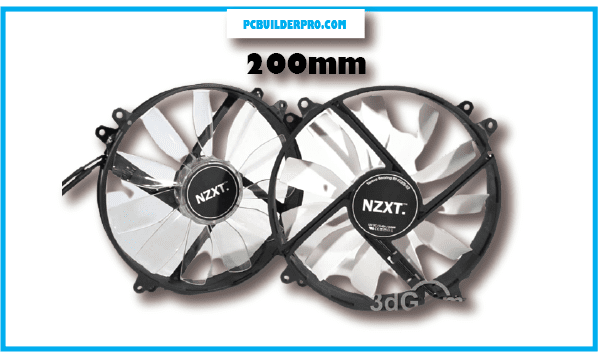
In the world of PC cooling, bigger isn’t always better, but in the case of 200mm PC fans, it certainly can be! These mammoth-sized fans bring a whirlwind of benefits to your system, from superior airflow to quieter
operation. Discover the dimensions, advantages, applications, and how to select the perfect 200mm PC fan for your setup.
Dimensions of 200mm PC Fans: Embracing the Gigantic
First, let’s get the dimensions of a typical 200mm PC fan straight:
- Diameter: 200mm (7.87 inches)
- Thickness: 25mm (1 inch)
- Mounting Holes: 180mm x 180mm (7.09 inches x 7.09 inches)
These fans mean serious business with their large size.
The Benefits of 200mm PC Fans: Go Big or Go Home
Wondering why you should consider a 200mm PC fan? Here are the compelling reasons:
- Superior Airflow: A larger size means more airflow, perfect for keeping your PC chill, even under intense loads.
- Whisper-Quiet Operation: Despite their size, 200mm fans often run quietly, making them ideal for those who prefer a peaceful PC experience.
- Unbeatable Cooling Performance: When it comes to high-performance PCs and servers, 200mm fans deliver exceptional cooling prowess.
Where 200mm PC Fans Shine
These colossal fans are versatile and find their place in various applications:
CPU Cooling: Tame the heat generated by high-performance CPUs with the robust cooling of 200mm fans.
GPU Cooling: Keep powerful GPUs in check with efficient cooling in high-end systems.
Case Cooling: Ensure optimal temperatures within your PC case, whether you’re venting hot air or cooling specific components like motherboards or hard drives.
Server Cooling: 200mm fans are trusted companions in keeping servers cool and reliable.
Selecting the Perfect 200mm PC Fan: Critical Considerations
When you’re in the market for a 200mm PC fan, remember these key factors:
- Airflow (CFM): Higher CFM means more effective cooling.
- Noise Level (dBA): Opt for lower dBA ratings to maintain a tranquil computing environment.
- Speed (RPM): 200mm fans generally range from 500 to 2000 RPM, finding the right balance between airflow and noise.
- Price: With options to fit various budgets, there’s a 200mm fan for every financial plan.
Top 200mm PC Fan Brands: Trust in the Best
When you’re on the hunt for a 200mm PC fan, turn to these reliable brands:
- Noctua
- Arctic
- Scythe
- Cooler Master
- Corsair
They’ve earned their stripes as top-notch cooling solution providers.
Conclusion: 200mm PC Fans – The Giants of Cooling
For users seeking top-tier, silent, and powerful cooling solutions for their high-performance PCs or servers, 200mm PC fans are the way to go. Their remarkable airflow, low noise levels, and unbeatable cooling
performance set them apart. While they may come at a higher cost and require more space, 200mm fans are the giants that deliver the pinnacle of cooling. Keep your systems running cool, calm, and collected with these colossal cooling champions!
8. 220mm PC Fan and Dimensions
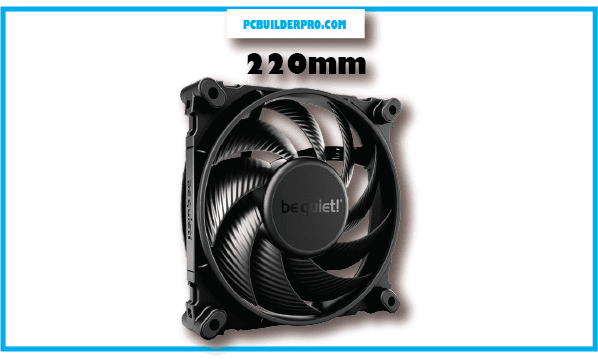
When it comes to achieving gaming nirvana and workstation supremacy, every degree matters. Enter the 220mm PC fan, the mighty cooling solution that’s here to make a big
statement. Offering more airflow, less noise, and a dash of style, these fans are the secret sauce for elite systems.
The Dimensions of 220mm PC Fans: Unleash the Power
Let’s start with the numbers:
- Dimensions: 220mm x 220mm x 30mm (approximately)
This fan’s robust build is designed to make a statement in both size and performance.
Advantages of 220mm PC Fans: Bigger Is Better
Discover why these fans are gaining popularity:
- Supreme Airflow: 220mm fans are the giants of cooling, capable of moving substantial amounts of air. Your system stays cooler and more stable, even during intense gaming sessions.
- Whisper-Quiet: Surprisingly, 220mm fans can run quietly, delivering powerful cooling without distracting noise.
- Aesthetically Pleasing: These fans often come with captivating designs, adding a touch of flair to your system’s appearance.
But Wait, There’s a Catch: Considerations for 220mm Fans
Despite their advantages, 220mm fans have some trade-offs:
- Pricey Investment: They generally come with a higher price tag compared to smaller fans.
- Elusive Availability: Finding both the fans and compatible cases can be a bit more challenging due to their size.
Dimensions Matter: Ensuring a Fit
Before diving into the world of 220mm fans, make sure your case can accommodate them. Most cases designed for these fans will have specific mounting locations, often on the front or side. However, it’s essential to check for clearance, especially if you have sizable components like graphics cards.
Selecting Your Perfect 220mm PC Fan: Key Considerations
Here’s what to keep in mind while shopping for your cooling giant:
- Airflow: Opt for fans with high airflow ratings to guarantee efficient cooling.
- Noise: Look for fans with low noise ratings, particularly if you cherish a quiet environment.
- Aesthetic Appeal: Choose a fan that complements your system’s overall look.
- Budget: Prices for 220mm fans can vary from around $10 to $50, so set your budget beforehand.
Top Picks: Leading 220mm PC Fans
Explore some standout options in the world of 220mm fans:
- Corsair AF220R: Balancing airflow and noise at an attractive price point.
- Noctua NF-S22q PWM: Known for exceptional quiet performance, ideal for those who demand silence.
- Be Quiet! Silent Wings 3 220mm: Another fantastic choice for users who prioritize a hushed environment.
Conclusion: Conquer the Heat with 220mm PC Fans
For gamers and power users who crave the ultimate cooling performance and don’t mind investing a bit more, 220mm PC fans are the answer. Their immense airflow, quiet operation, and striking designs make them
a force to be reckoned with. As you jump on your journey to cooling excellence, consider airflow, noise, aesthetics, and budget. With the right 220mm fan,
you’ll be well on your way to conquering the heat and achieving peak performance in style!
9. 240mm PC Fan and Dimensions
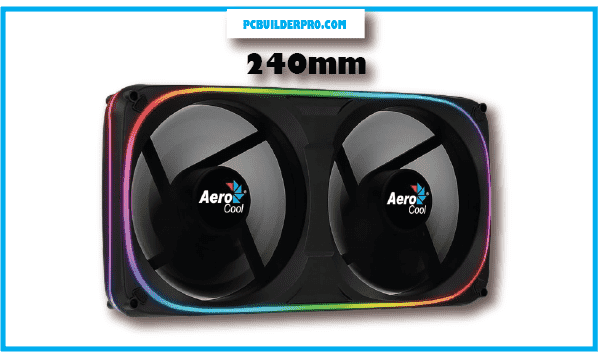
In the realm of high-performance computing, there’s no room for compromise. Enter the 240mm PC fan, a cooling powerhouse designed for elite gamers and workstation enthusiasts. Offering unparalleled airflow, a serene soundscape, and a touch of elegance, these fans redefine your system’s cooling experience.
The Dimensions of 240mm PC Fans: Unveiling the Giants
Let’s start with the numbers:
- Dimensions: 240mm x 240mm x 30mm (approximately)
These fans make a bold statement in both size and capability, boasting a form factor that’s as powerful as it is visually impressive.
Advantages of 240mm PC Fans: The Bigger, the Better
Discover why these colossal fans are the darlings of the high-performance world:
- Arctic Airflow: 240mm fans move air like champions, ensuring your system stays frosty even during the most intense gaming sessions.
- Whisper-Quiet: Despite their size, 240mm fans can run quietly, ensuring your system stays tranquil even under extreme load.
- Visual Aesthetics: These fans often come with striking designs that not only cool but elevate your system’s style.
But Wait, There’s a Catch: Considerations for 240mm Fans
Despite their advantages, 240mm fans have some trade-offs:
- Pricier Investment: They often come with a premium price tag compared to their smaller counterparts.
- Uncommon Sighting: Due to their size, 240mm fans and compatible cases may not be as readily available.
Dimensions Matter: Ensuring the Perfect Fit
Before embarking on your 240mm fan journey, ensure your case can house these giants. Most cases designed for them will feature specific mounting locations, usually on the front or side. However, always check for clearance, especially if you have bulky components like oversized graphics cards.
Selecting the Ideal 240mm PC Fan: Critical Considerations
Here’s your checklist for navigating the 240mm fan landscape:
- Airflow: Opt for fans with substantial airflow ratings to guarantee effective cooling.
- Noise: Prioritize fans with low noise ratings, especially if you cherish a quiet environment.
- Aesthetic Harmony: Choose a fan that complements your system’s overall look.
- Budget: Prices for 240mm fans can range from around $10 to $50, so establish your budget beforehand.
Top Picks: Leading 240mm PC Fans
Explore some standout options in the realm of 240mm fans:
- Corsair AF240R: A fan that offers commendable airflow and noise performance at an attractive price point.
- Noctua NF-A240 PWM: Renowned for its whisper-quiet performance, ideal for those seeking serenity in their gaming environment.
- Be Quiet! Silent Wings 3 240mm: Another excellent choice for users who demand a quiet yet powerful fan.
Conclusion: 240mm PC Fans – Where Power Meets Prestige
For users who demand the pinnacle of cooling performance and are willing to invest in their quest for perfection, 240mm PC fans are the answer. Their unmatched airflow, serene operation, and stunning designs
make them a force to be reckoned with. As you venture into the world of 240mm fans, consider airflow, noise, aesthetics, and budget. With the right 240mm fan, you’ll ascend to cooling greatness and do it in style!
How To Measure the PC Fan Size?: ( 5 Methods )
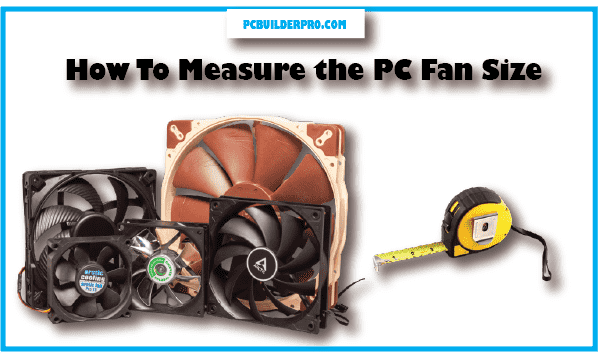
Measuring your PC fan might sound like a breeze, but it’s a task that comes with its own set of challenges. Fear not! We’re here to help you demystify this process. Why is it important, you ask? Well, measuring your fan size
is crucial for selecting the right replacement, troubleshooting cooling issues, and finding the perfect fan to keep your rig running smoothly. Let’s dive into the methods to measure your PC fan size:
1. Measure the Diameter of the Fan Blades:
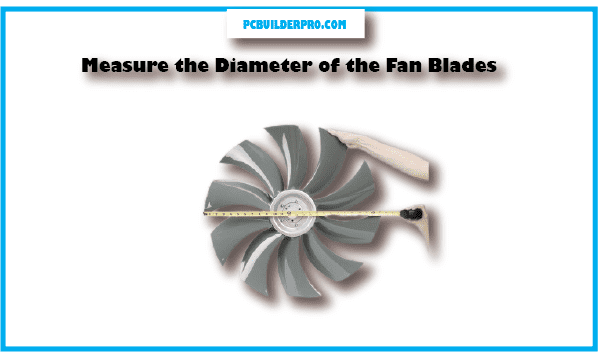
- The Go-To Method! This is the most common and usually, the most accurate way to measure your fan. Just grab a measuring tape or ruler and measure from one blade tip to the opposite blade tip. Simple, right?
2. Measure the Distance Between Mounting Holes:
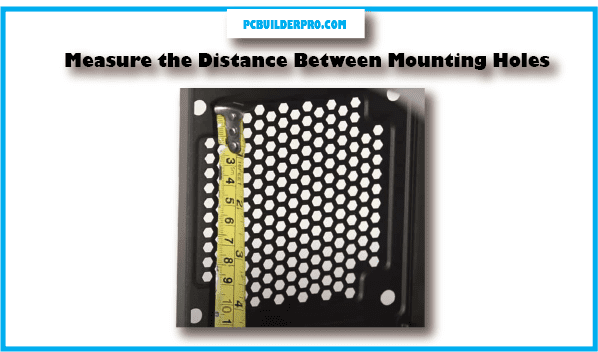
- A nifty method when the fan is already inside your case. Measure the distance between the two central mounting holes on the fan. Voilà!
3. Ruler or Measuring Tape:
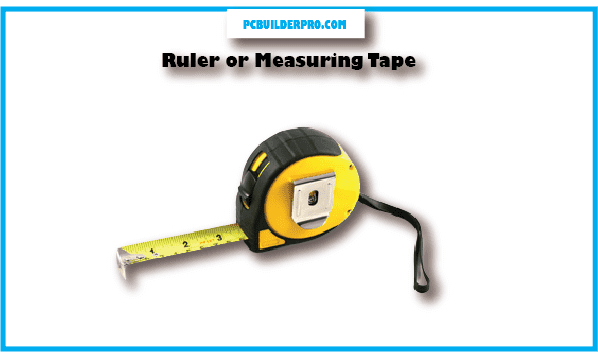
- Old school but effective. Lay the ruler or tape across the fan blades or mounting holes and measure away. Just mind your fingers!
4. Digital Caliper:

- Precision, anyone? A digital caliper provides the most accurate measurement. Gently clamp its jaws around the fan blades or mounting holes and press ‘read.’ You’re in nerd heaven!
5. Software Programs:
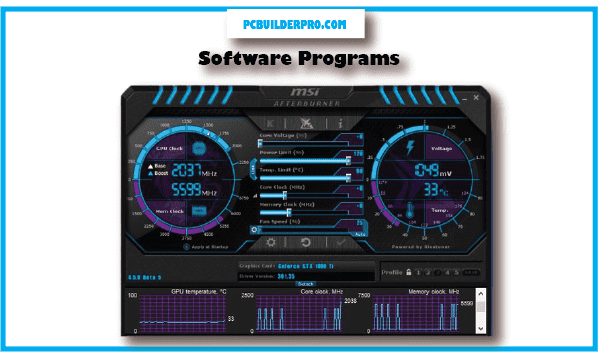
- In the digital age, there’s a program for everything. Fan Control is one such option. Fire it up, select your fan, and watch the magic happen. It’ll tell you the size in millimeters.
Common PC Fan Sizes:
PC fan sizes come in a few standard options, with 120mm, 140mm, and 200mm being the most prevalent. Of course, there are others like 80mm, 92mm, and 240mm for those looking for something unique.
Pro Tips:
When measuring the fan blade diameter, measure the widest part for accuracy.
For measuring the distance between mounting holes, stick to the central holes.
If all else fails, check the fan model number online for the size.
Which Method to Use?
The best method depends on your specific situation. If your fan is easy to access, a ruler or measuring tape will do the trick.
If it’s nestled inside your case, measuring the mounting holes is a smart choice. For precision
nerds, a digital caliper is your golden ticket. Regardless of your method, accuracy is your ally. It ensures you get the right-sized fan, and that’s a win!
Now, armed with these measuring techniques, you’re ready to conquer the world of PC fan replacement and upgrades.
What are the different sizes of PC fans available?
PC fans are like the cool breeze on a hot day for your computer. They come in sizes that are just right for any computer case, from little 80mm ones that are about as wide as a deck of
cards, to big 200mm ones that are as wide as a school ruler. The most common size is 120mm, which is about the length of a pencil.
What is the most common size for PC fans?
The 120mm fan is the star of the show. It’s not too big, not too small, just perfect for keeping your computer cool without taking up too much room.
Is a bigger PC fan always better?
Bigger fans are like having a larger fan in your room; they can move more air and keep things cooler. But sometimes they can be a bit loud, and if your computer case is cozy, they might not fit.
When would I use a smaller PC fan?
If your computer case is on the snug side, like a little apartment, you’ll want a smaller fan. The 80mm or 92mm fans are great for these tight spots.
What are the benefits of a larger PC fan?
Larger fans are like gentle giants. They can move a lot of air without making a fuss, so your computer stays cool and quiet, like a whisper.
How do I measure the size of my PC fan?
Just grab a ruler and measure straight across the fan, from one side to the other. That’s the size of your fan, easy peasy!
Where can I find the size information for my PC fan?
Look for a little sticker on the fan, or check the booklet it came with. It’s like finding the size tag on your clothes.
Do I need to buy a specific size fan for my PC case?
Absolutely! It’s like buying shoes; you need the right size for a perfect fit. Your computer case has special spots just for fans of certain sizes.
How can I check if a new fan will fit in my PC case?
Take a peek at your computer case’s manual, or just measure the space between the screw holes where your current fan sits. It’s like measuring your window before getting curtains.
What other factors should I consider besides size when choosing a PC fan?
Think about how loud the fan is, how much air it can push around (that’s the CFM), and how fast it spins (the RPM). It’s like choosing a car;
you want one that’s just right for you in terms of speed, comfort, and how much gas it uses.
Are there any special types of PC fans?
Think of PC fans as the different flavors of ice cream. Some are just plain vanilla, but others are like fancy sundae with extra toppings. There are fans made just for tight spots, like
high-static pressure fans, are great at squeezing cool air through the nooks and crannies of your computer’s brain (the CPU) or its eyes (the GPU).
What does RPM mean for PC fans?
RPM is like the speedometer in a car for your PC fan. It shows how fast the fan is spinning. Just like a car, the faster it goes, the more wind it makes. But be careful, because just like a loud engine, a fast-spinning fan can make a lot of noise.
How does CFM relate to PC fan performance?
CFM is the size of a fan’s lungs. It tells you how much air the fan can breathe in and out. The bigger the number, the more air it can move, keeping your PC nice and cool.
How can I control the speed of my PC fans?
You’re the boss of your PC fans. You can tell them to speed up or slow down using your computer’s BIOS, which is like the brain of your PC, or with special software that’s like a remote control for fans.
Is it important to keep my PC fans clean?
Yes, it’s super important! Imagine trying to breathe with a stuffy nose; that’s what it’s like for a fan when it’s all dusty. Keeping it clean means it can breathe easily and do its job better.
How often should I clean my PC fans?
It’s like giving your car a wash. If you’re driving through a lot of dust, you’ll need to clean it more often. So, if your place is dusty, give your fans a clean every few months.
Can I replace the fans in my pre-built PC?
Sure, you can give your PC a makeover with new fans, just like changing the tires on your car. Just make sure the new fans are the right size and type for your PC.
Where can I buy new PC fans?
You can shop for PC fans as you shop for books or clothes, either at a computer store or online. There’s a whole world of fans out there waiting for you.
Are there any visual customization options for PC fans?
Absolutely! Some fans come with cool lights built-in, so your PC doesn’t just stay cool; it looks cool too. It’s like adding neon lights to your bike or car.
What are some good resources to learn more about PC fan selection?
The internet is full of guides and videos that can help you pick the perfect fan, like a recipe book for cooking. You can also check out the websites of fan makers for the scoop on the latest and greatest fans.
Conclusion
PC fans are like superheroes for your computer. They keep it cool and prevent it from turning into a hot potato. Remember, we have small, medium, and big fans to choose
from, just like ice cream cones. But make sure to pick the right size, or your computer might get a bit too chilly!
So, next time you see a PC fan inside your computer, give it a thumbs-up for keeping things frosty (but not too frosty!).
And if you ever hear it making funny noises, don’t worry; it’s just telling computer jokes!
Now, go enjoy your computer games, and remember, PC fans are your computer’s cool friends! Stay chill, everyone! 😎🖥️
FAQs
What’s the difference between various PC fan sizes?
The primary difference is their physical dimensions. Larger fans, like 200mm, move more air, while smaller ones, like 40mm, are ideal for compact spaces.
How do I measure my PC fan size?
Measure the diameter of the circular fan blades to determine its size. It’s a simple and effective method.
What’s the advantage of using larger fans?
Larger fans generally offer better cooling performance and lower noise levels due to their ability to move more air at lower speeds.
Are smaller fans completely useless then?
Not at all! Smaller fans are perfect for tight spaces where their larger counterparts won’t fit. They still provide valuable cooling.
Can I mix different fan sizes on my PC?
Technically, yes, but it’s usually best to stick to one size for uniform cooling and aesthetics.
How do I ensure my new fan fits my case?
Check your case’s specifications and available mounting locations. Most cases list compatible fan sizes.
Do I need to be a PC expert to replace a fan?
Not at all. Replacing a fan is relatively simple and often requires just a screwdriver. Just be cautious with your components!
Are larger fans more expensive?
Generally, yes, larger fans tend to be pricier than their smaller counterparts. However, they often offer better value in terms of cooling efficiency.

